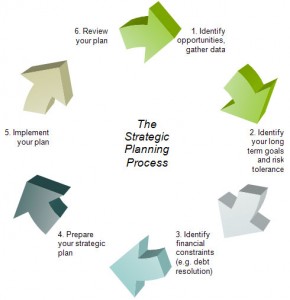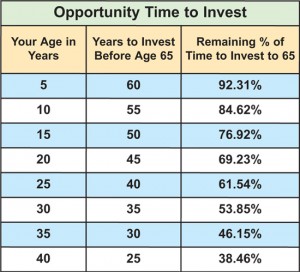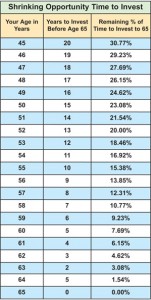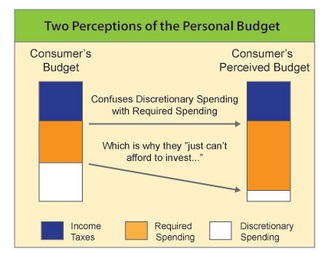Investing is the strategic planning process, not the final goal It is important to realize that investing is not the goal. The goal is based on a future result that you aim for using mathematical calculations. Investing is what you do in the meantime while facing a multitude of circumstances in the world that affects the market where stocks and securities lose or gain potential to grow, which means, intermittently affecting your control of the end results in relation to your goal.
While you are young and have a family and/or close dependents, you also want to enjoy life and create memories. You want to live in the present to minimize fear of the future during the investment process, being mindful that preparing to retire means engaging in the process with an advisor using timeless principles.
Perhaps you’ve decided that you must accelerate your combined RRSP savings if you are to possibly realize your retirement dreams. Here is a strategic process that works all year round, well ahead of, and therefore, eliminating the annual RRSP deadline frenzy. This investment also works well when investing using TFSAs.
A systematic investment strategy called Dollar-Cost-Averaging (DCA). By pre-arranging a schedule of making equal monthly investment purchases of a mutual fund, you can realize big advantages:
1) Get your RRSP money working earlier. Every year, a good deal of money begins working long before the RRSP deadline. This gets part of your fund money invested earlier every year in small amounts you can afford. DCA allows for a convenient pre-payment of your annual RRSP contribution, instead of in the last anxious moments of February before the annual deadline.
2) You can profit from more gains after buying during market downturns. You needn’t worry about market-timing decisions when you buy your mutual fund units. Investing a fixed dollar amount every month adds a benefit over the year. You will purchase more mutual fund units when the price is lower, fewer when the price is higher. While consistently purchasing throughout market declines, when units cost less, you buy more units with the same dollar. Thus, fears of the market dropping in value are replaced with the knowledge that you will eventually own far more fund units over time, as long as you continue to invest in the same scheduled manner when the market is down. The purchases are scheduled, not “timed”. There is a vast difference.
Not even the experts know exactly when the market will peak, or stop declining. This means that by waiting to purchase at a lower unit price, an investor might miss buying lower if the market begins climbing back suddenly. But, if you schedule consistent buying, using DCA, you won’t miss buying the lower-priced units.
What is the upside of DCA in a lower priced market? Fund units purchased during temporary market downturns can be very profitable once the market recoups any loss. Subsequent upward moving markets will greatly increase the value of every unit held (especially with the addition of those lower-priced bargain units bought when the market value declined, and as it inclines above each unit price purchase during periods of market gains). More units bought at lower prices, both while a market loses value and while the market swings back gaining momentum during a major bull market growth spell, offer the potential for future profit.
3) One more benefit. You’ll be less influenced by market fear factors if you remember: Investing is a strategic process, not the final goal. Dollar-cost-averaging fund purchasers are isolated from negative market psychology. Contrary to the crowd, they now automatically buy through periods of opportunity when the price is low, the time when most people often do the opposite — sell out of fear. Dollar-cost-averaging encourages determined, intelligent, and disciplined investment behaviour.























 Determine your perspective on investing. Always spending and never investing is a serious dilemma often based on a certain mindset that can easily change for the better. Do you view yourself as a consumer or an investor?
Determine your perspective on investing. Always spending and never investing is a serious dilemma often based on a certain mindset that can easily change for the better. Do you view yourself as a consumer or an investor?
